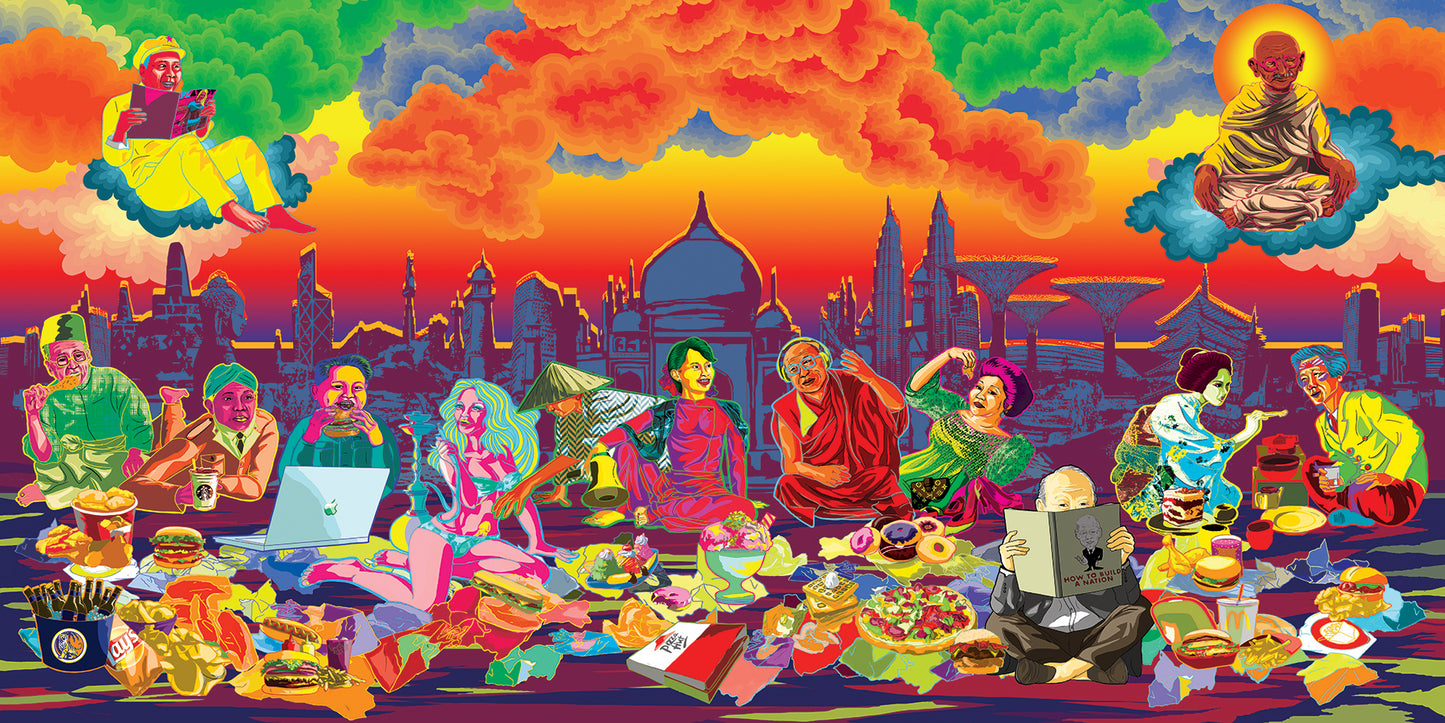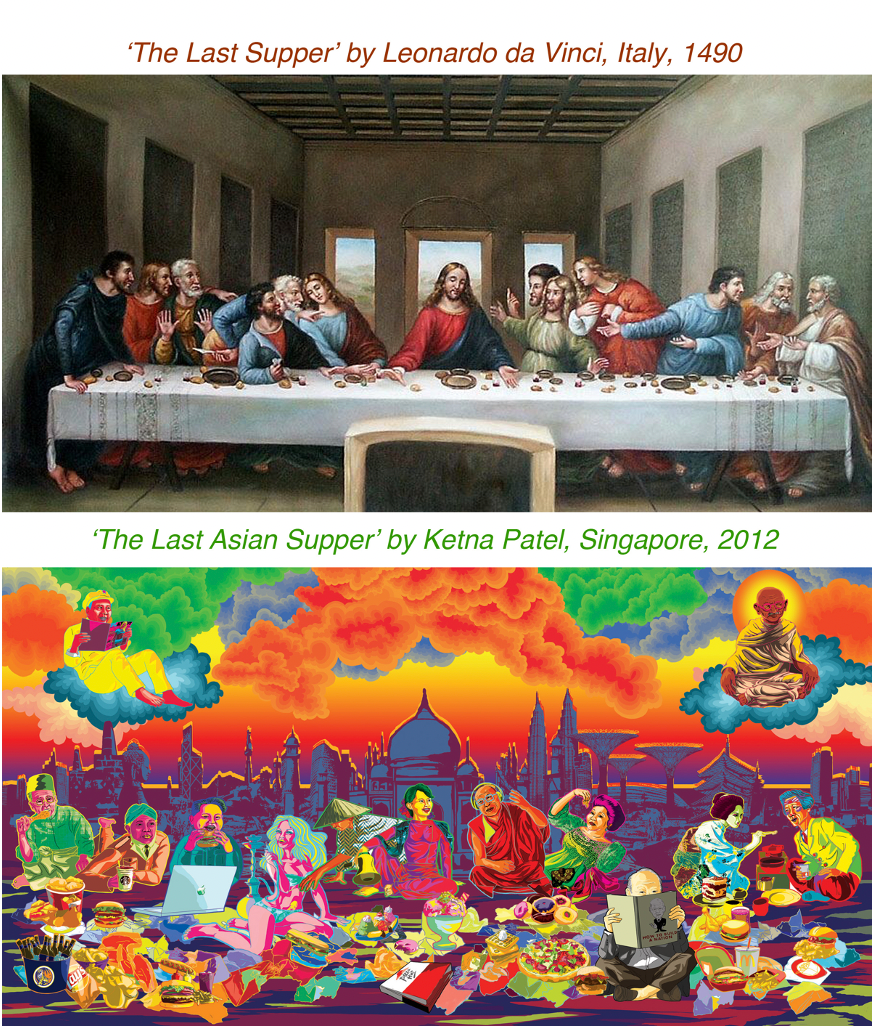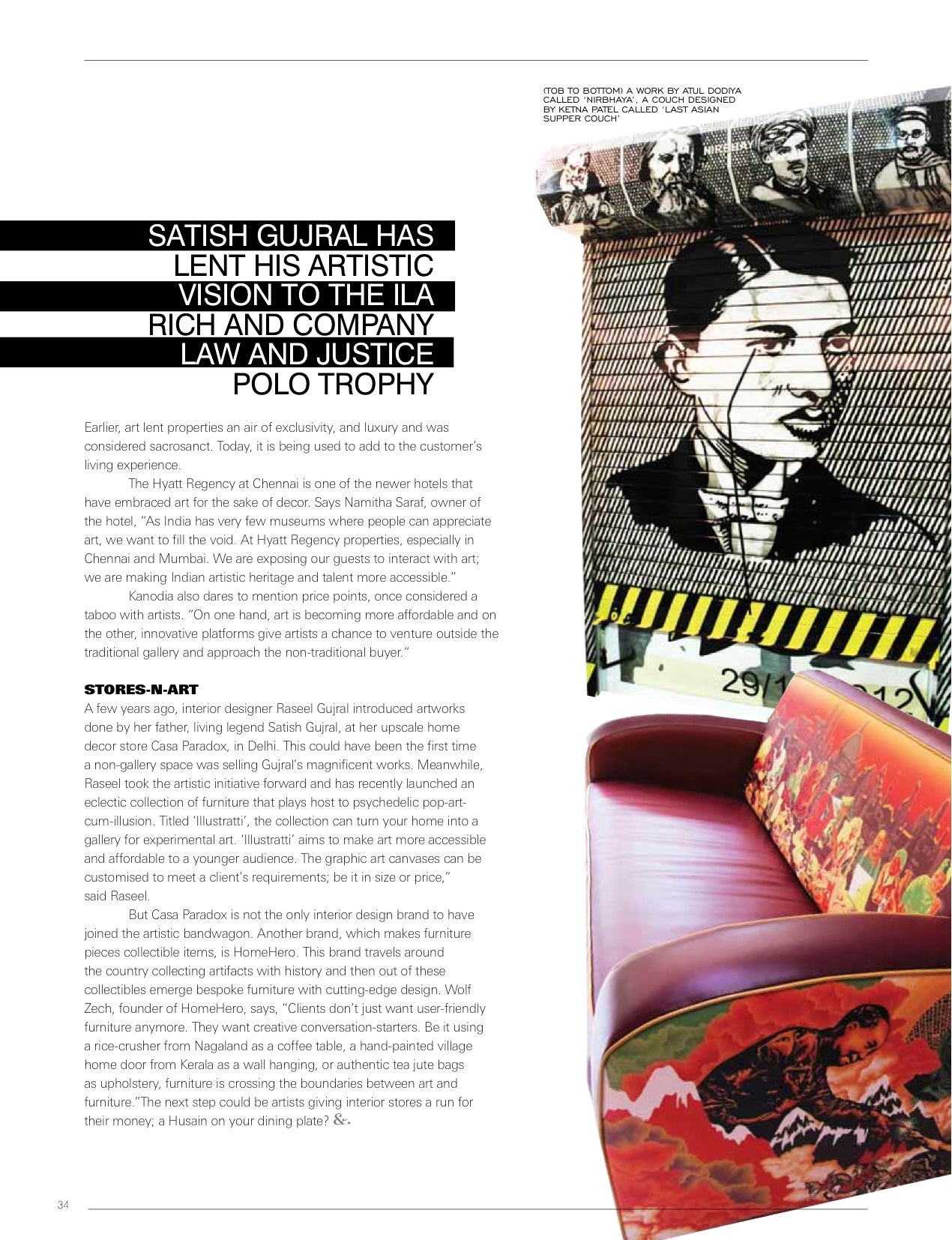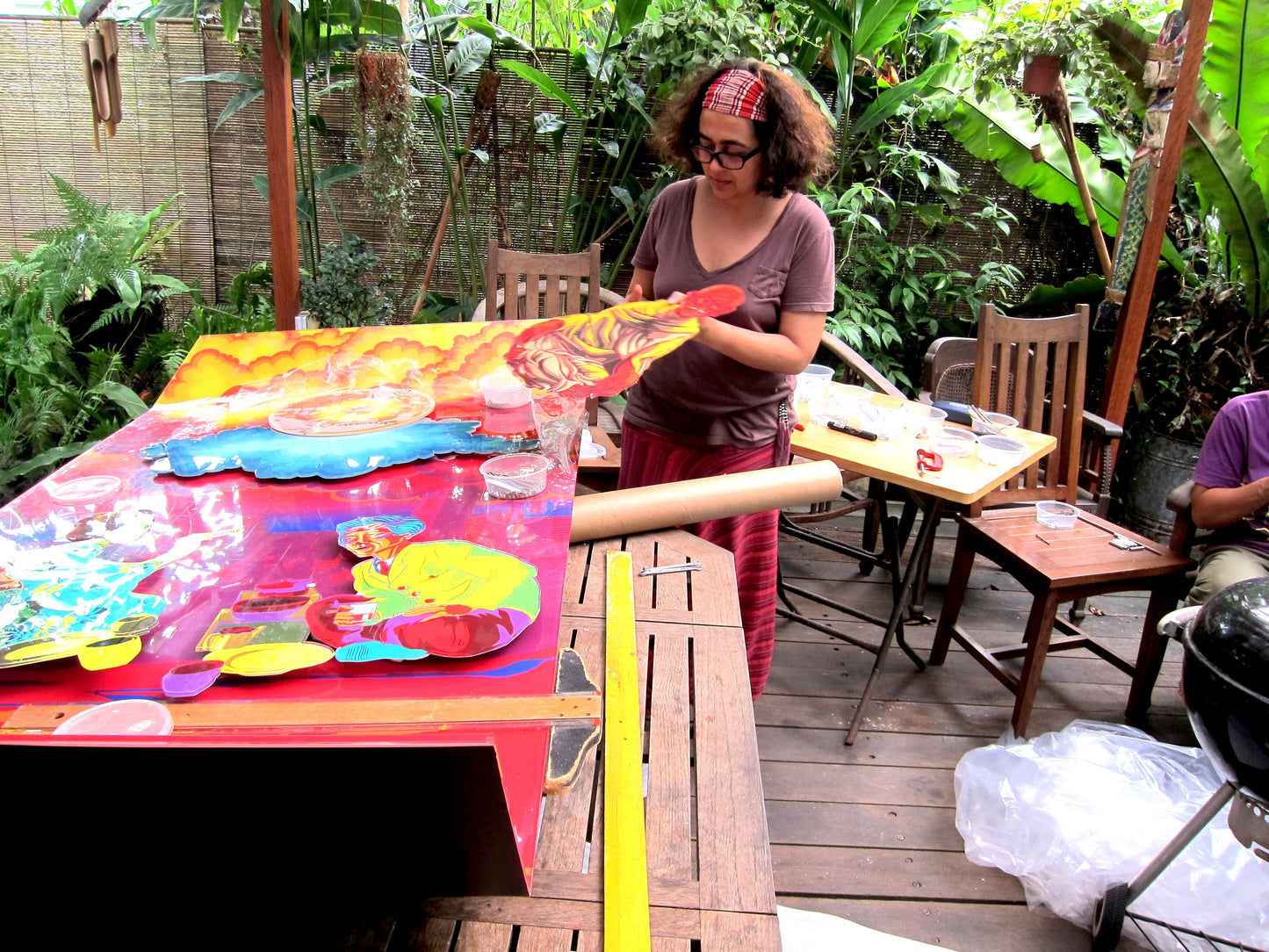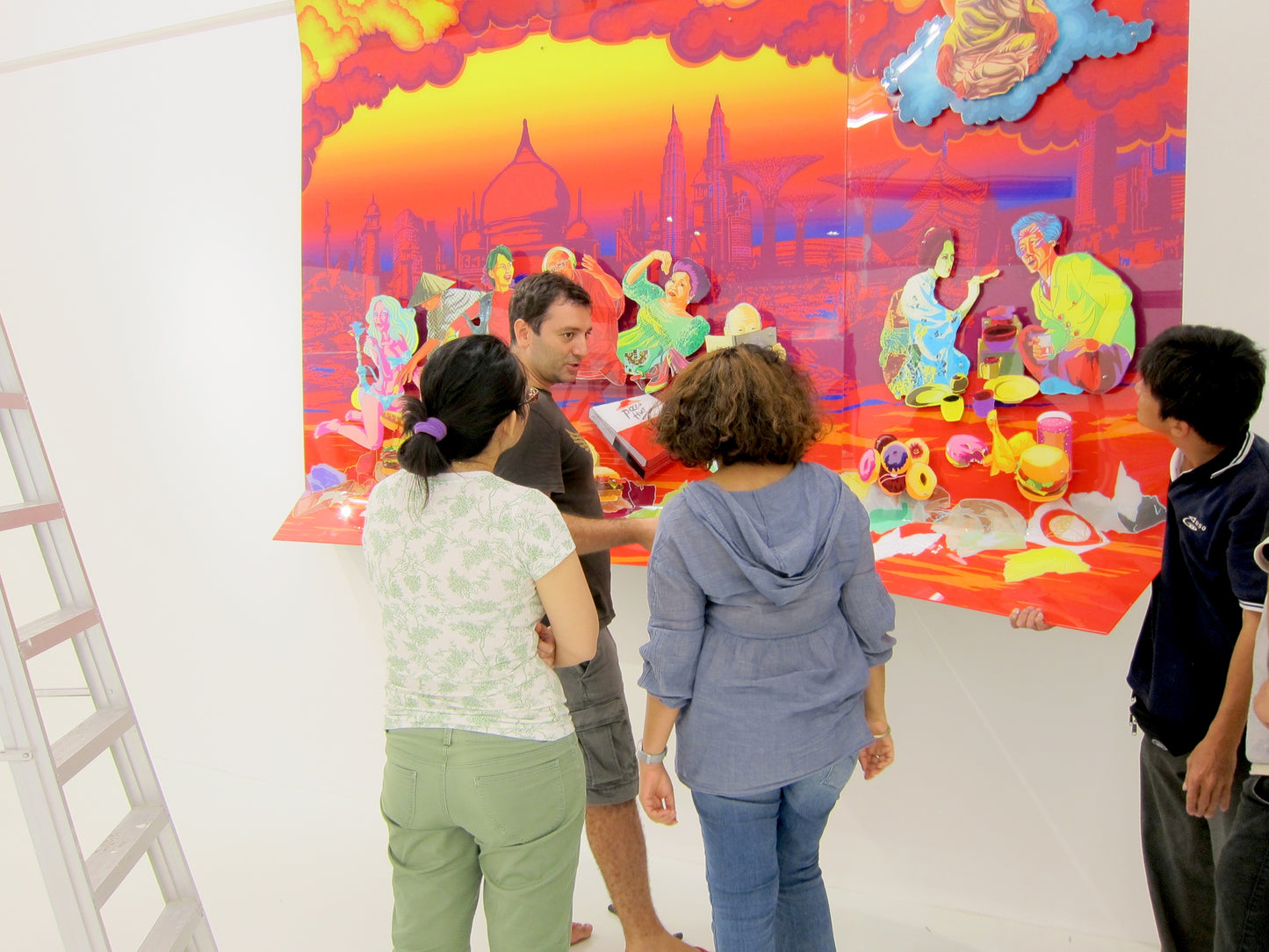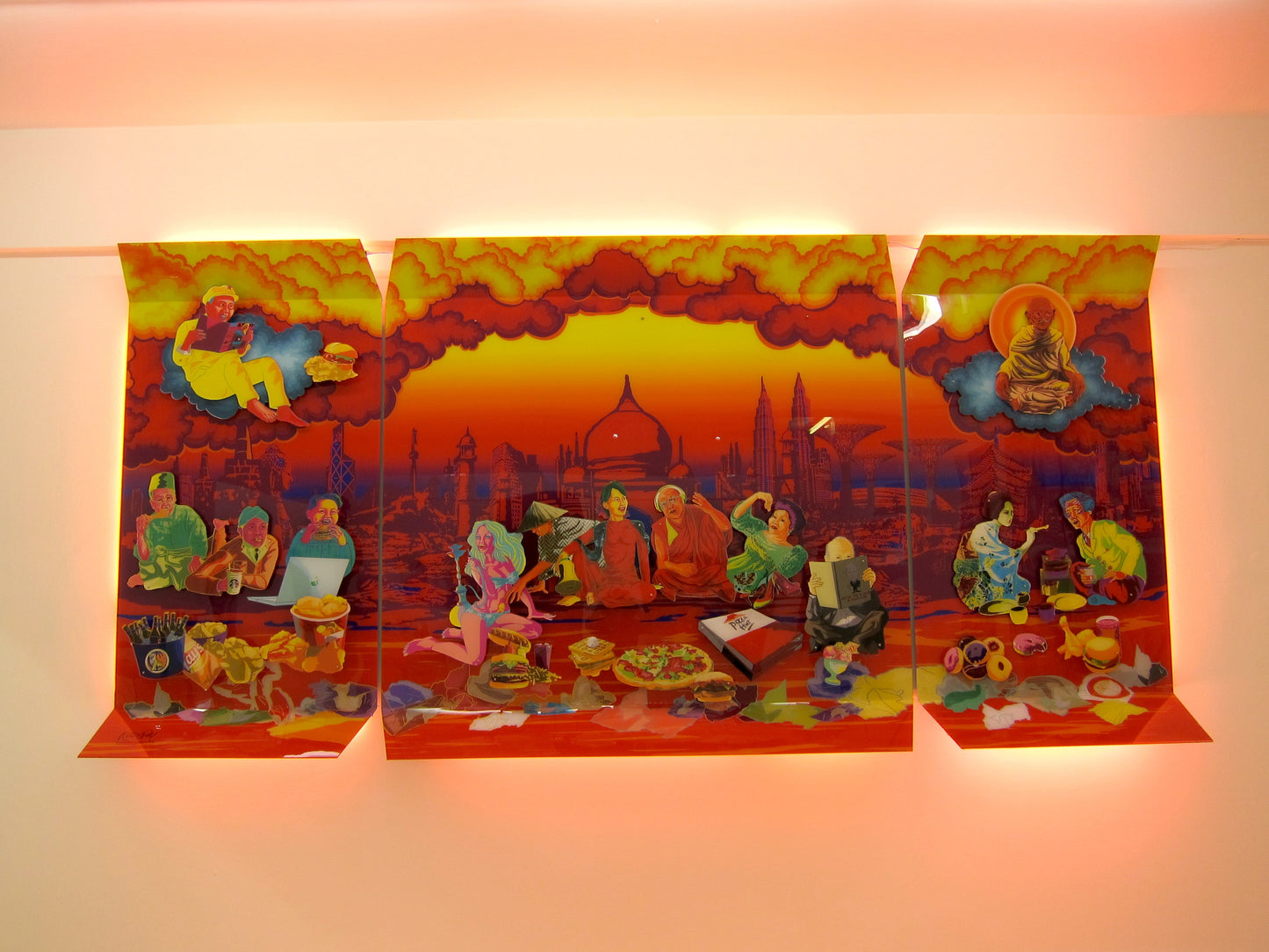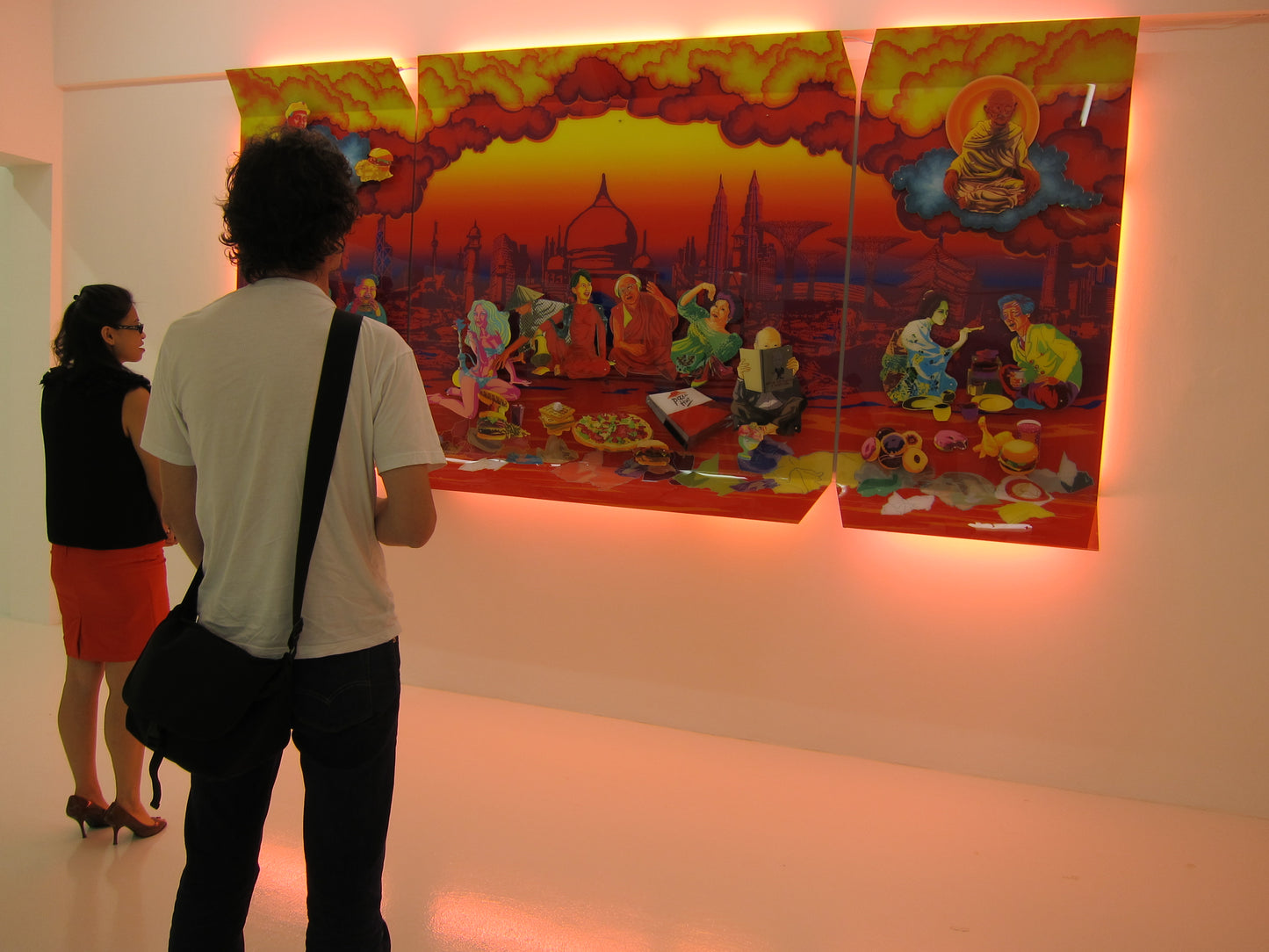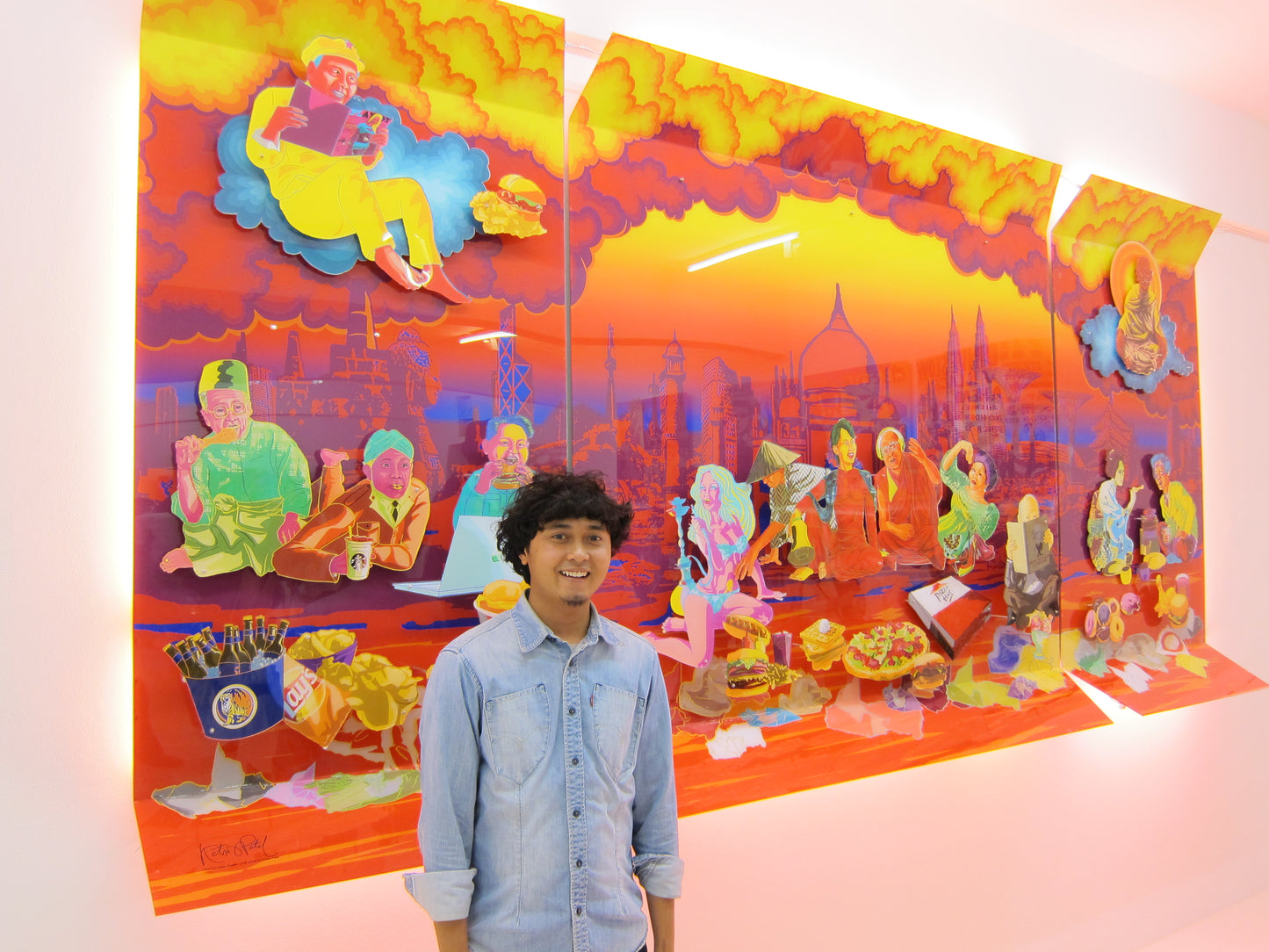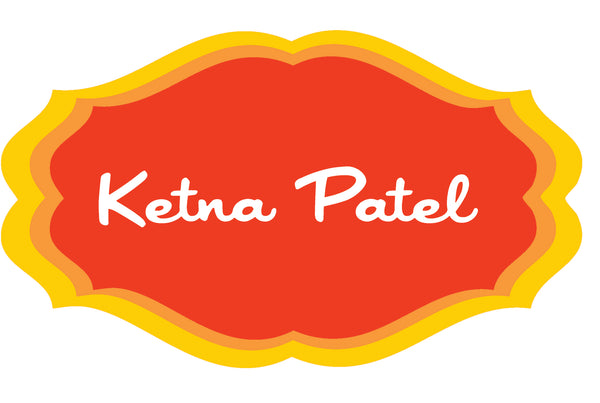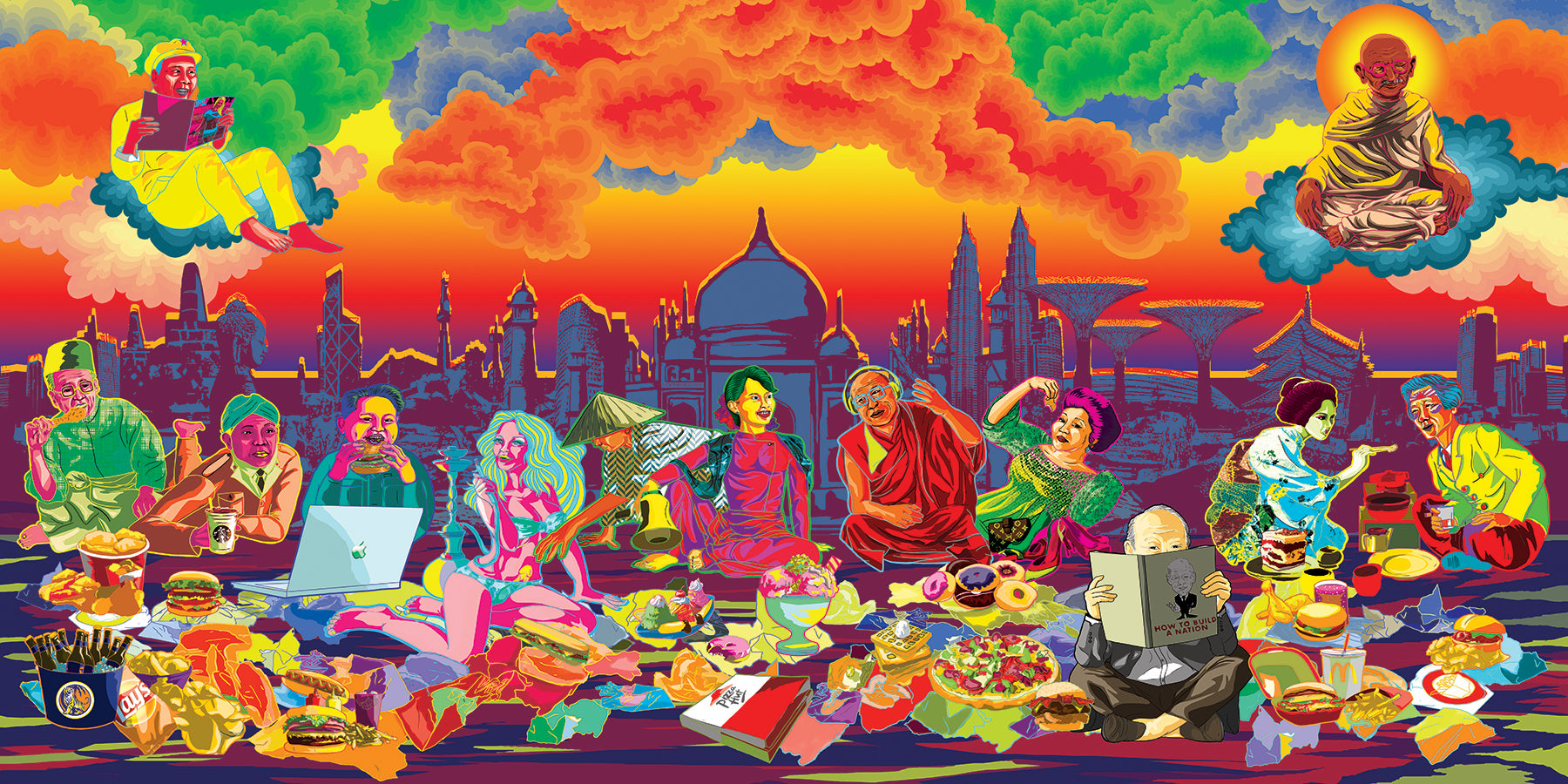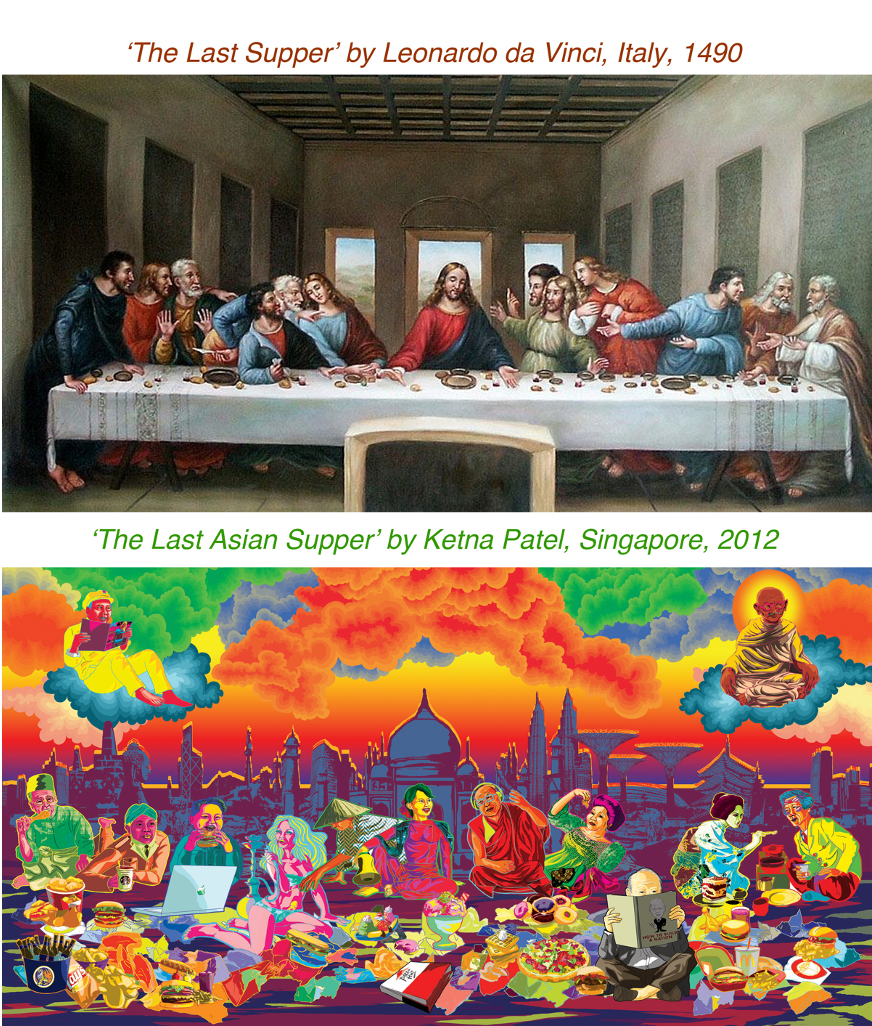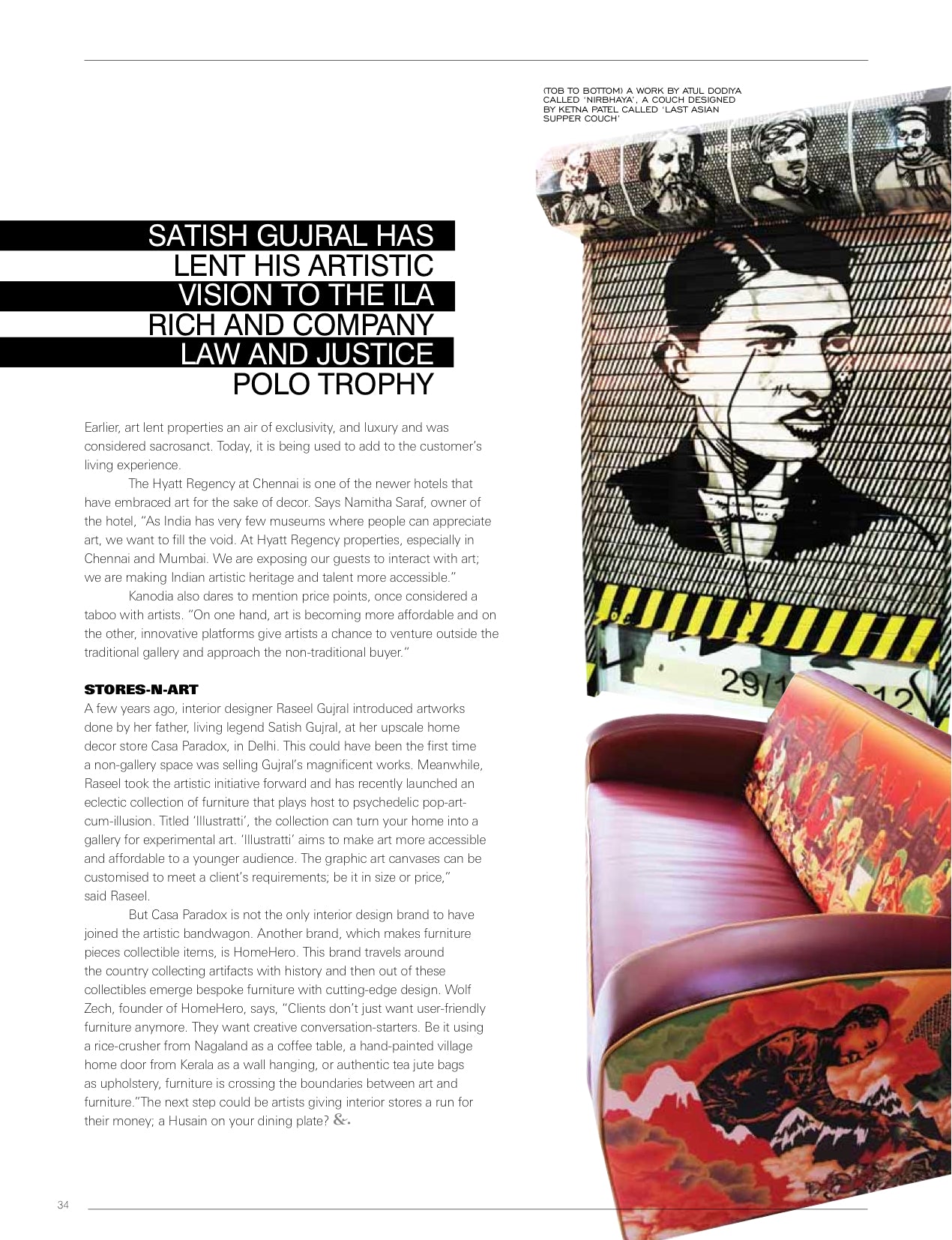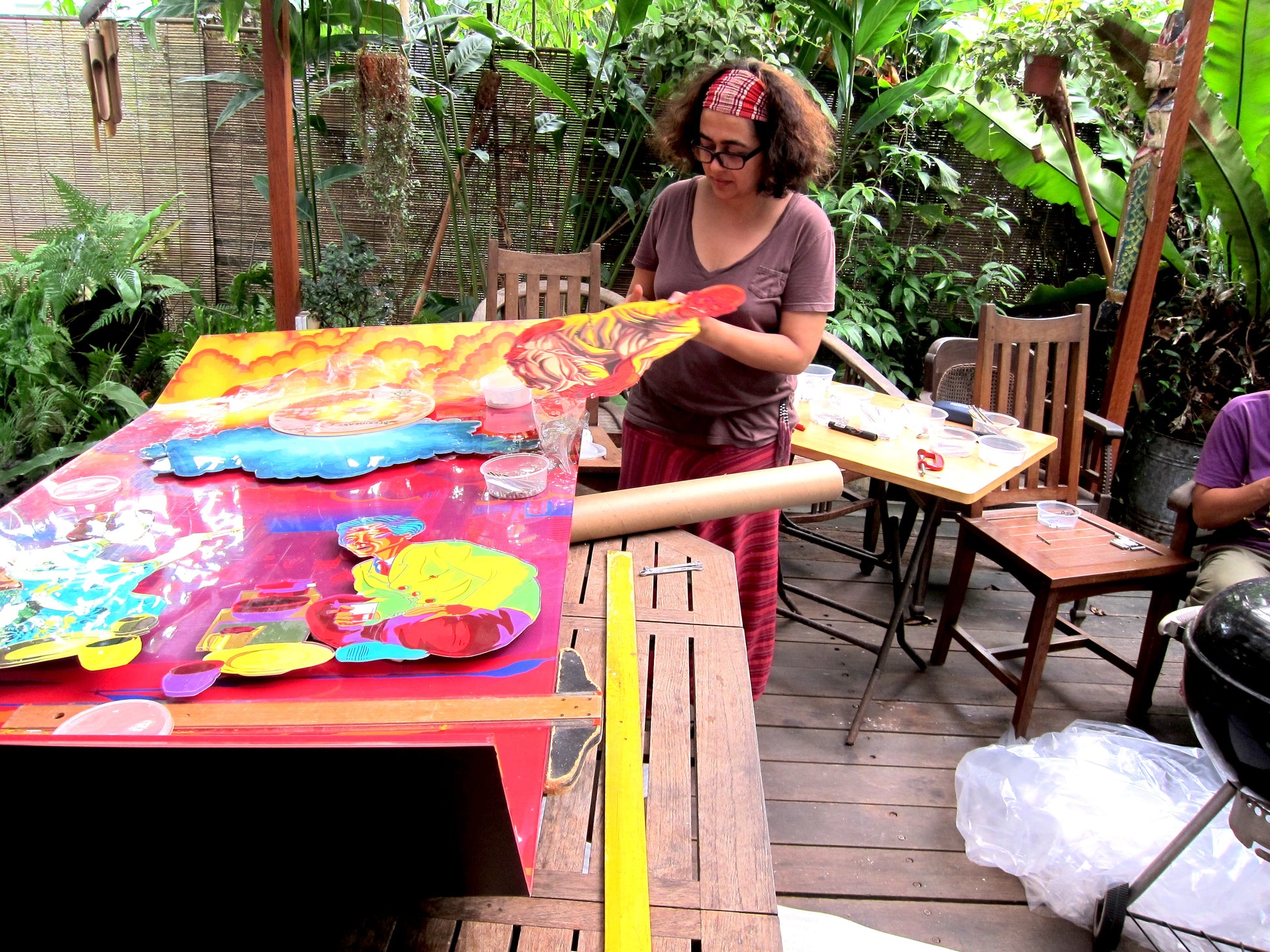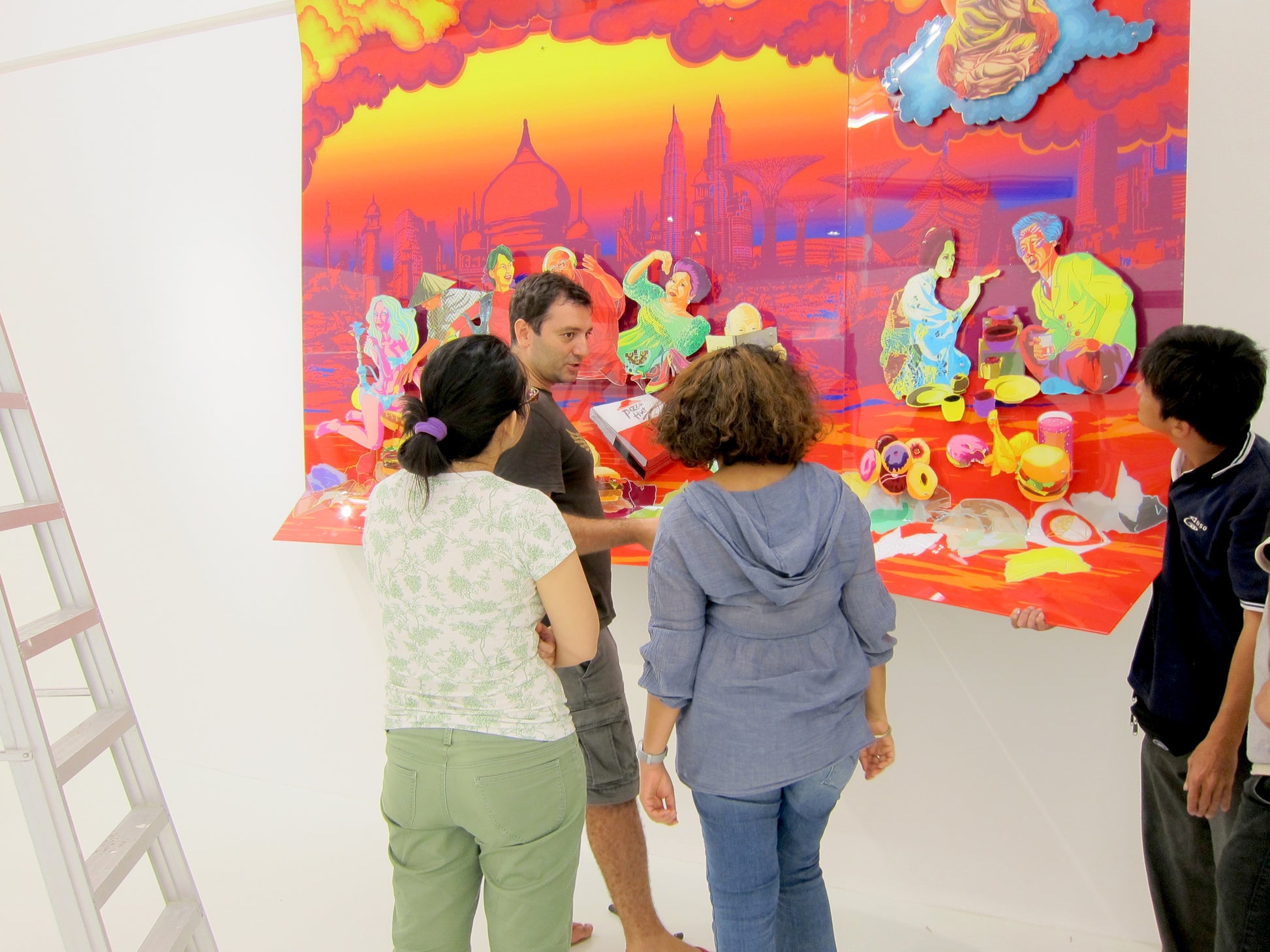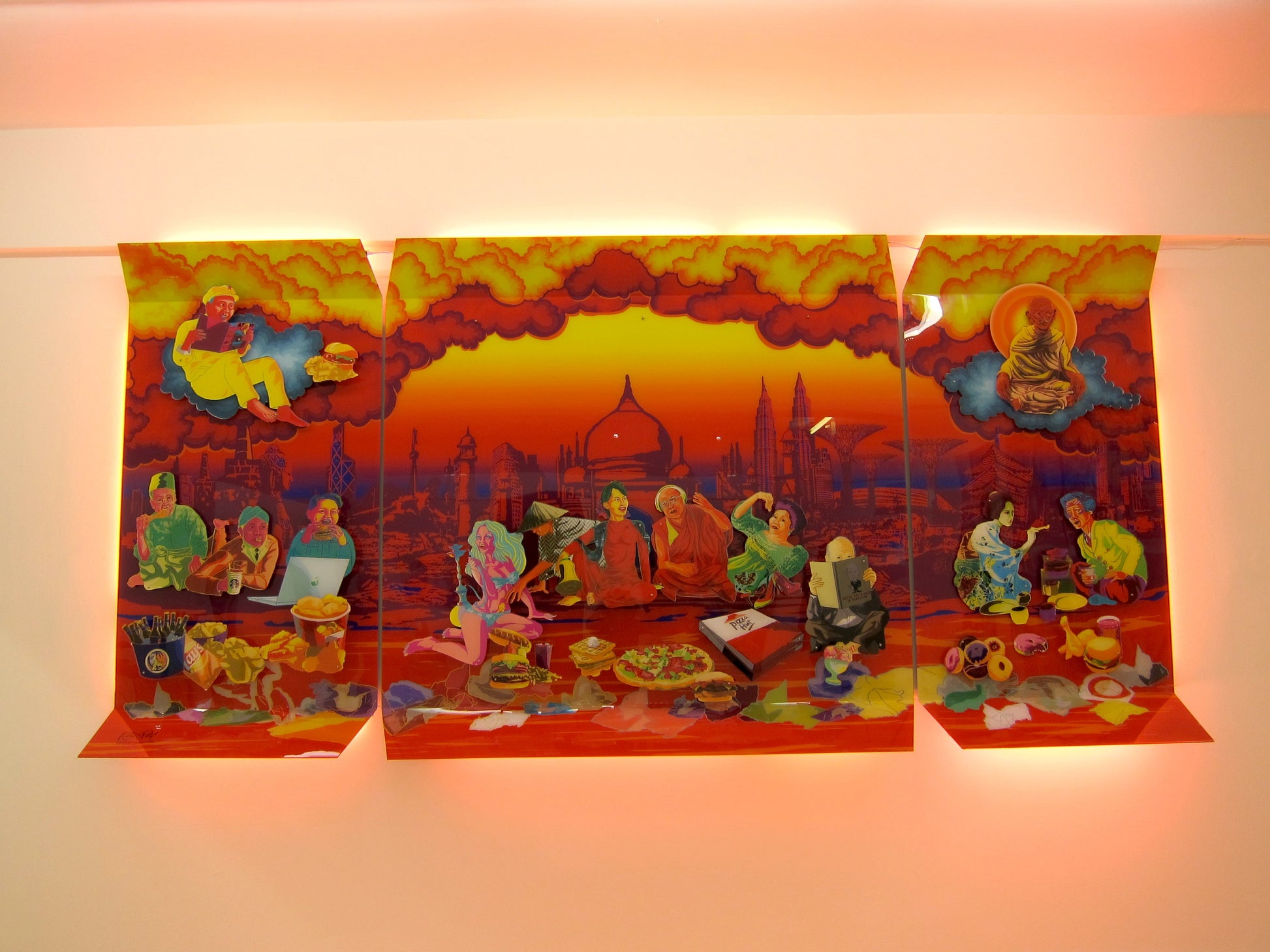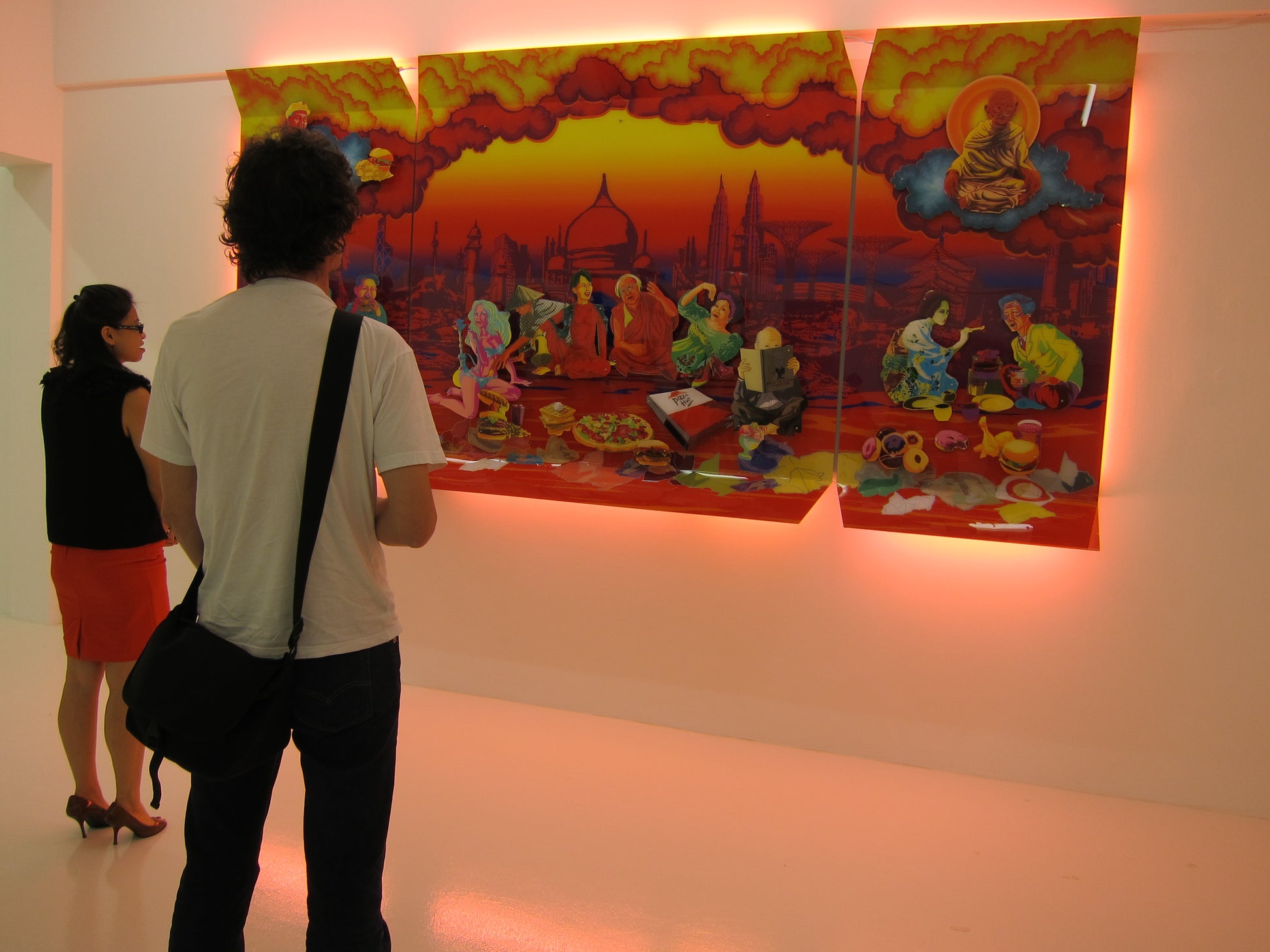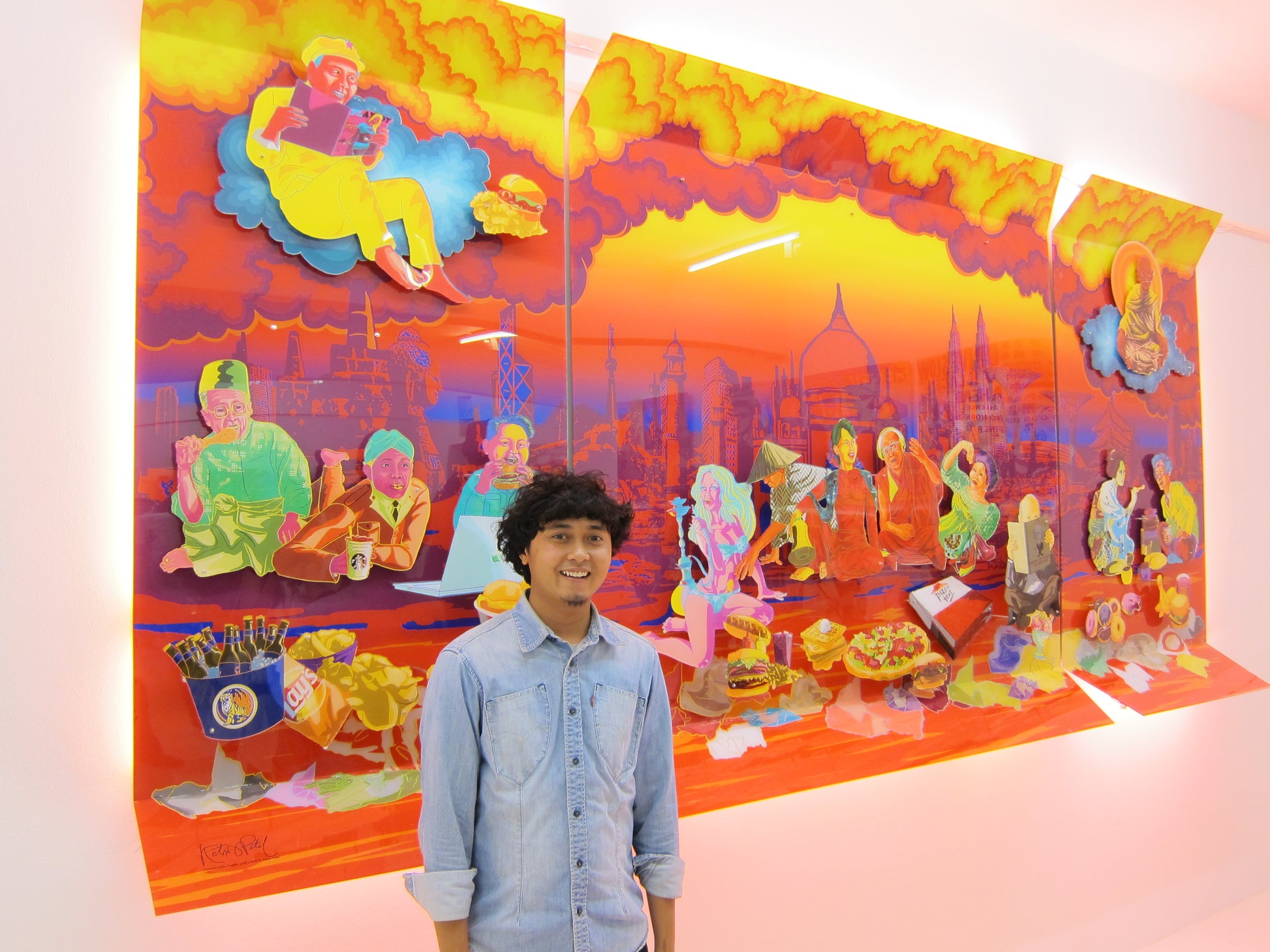KETNA PATEL ART STUDIO
THE LAST ASIAN SUPPER
THE LAST ASIAN SUPPER
Couldn't load pickup availability
Share
Multi-disciplinary artist Ketna Patel uses grand narratives and references to renaissance paintings that are embedded in all our collective consciousness. She attempts to flatten time, blur geographical boundaries, and bring to the fore a certain ‘consumption’ of contemporary culture that seems to be at a major penultimate moment before it eats itself into oblivion. There is beauty and death in this moment, and underneath it all, a small seed of a new beginning. Here, Leonardo Vinci's 'Last Supper' painting has been transmuted into Ketna Patel's 'The Last Asian Supper'. In ‘The Last Asian Supper’, several individuals are having a junk food picnic in the setting sun. Strewn with litter, the scene shows them happily enjoying themselves, oblivious to the darkness that is about to fall around themselves. From the left to the right, we have Tun Dr. Mahathir bin Mohamad (Malaysia’s fourth Prime Minister), Suharto (Indonesia’s second President), North Korea leader Kim Jong-un, a thai ‘lady-boy', a Vietnamese rice farmer, Aung San Suu Kyi (Burmese opposition politician and chairperson of the National League for Democracy in Burma), the Dalai Lama, Imelda Marcos (Filipino politician and widow of former Philippine President Ferdinand Marcos. Known also for her excessive obsession with branded shoes and handbags!), Junichiro Koizumi (Japan’s dashing, westernized Richard Gere lookalike ex Prime Minister; the only Prime Minister to have served more than five years in office since 1972), Lee Kuan Yew; the first Prime Minister of the Republic of Singapore, widely recognized as the founding father of modern Singapore. In the heavens are Chairman Mao on the left (representing the left brained, practical Chinese psyche, and Mahatma Gandhi on the right, representing the female, chaotic and rather emotional Indian psyche! In the background is a collage of famous Asian architecture, including the Borobudur temples, The Hong Kong and Shanghai bank, the Twin Towers of Malaysia, the Taj Mahal in India and the Gardens on the Bay in Singapore. The setting sun is a deliberate metaphor for the transition of ‘lightness’ to ‘darkness’. Instead of the picnicers getting up and tidying themselves, they seem to be oblivious to time and the repercussions of their self-indulgence. The ‘karaoke’ style visualization with its saturated colours is also deliberate, re-endorsing the ‘unreal’ and ‘make believe’ aspects of our illusory, maya world (‘Maya’ in Sanskrit means ‘illusion’)The collection Heterotopia refers to the essay ‘Of Other Spaces’, written by Michel Foucault in 1967. This is a concept of ‘spaces of otherness’, which are neither here nor there, that are simultaneously physical and mental, such as the moment you wake up after a dream, or the moment when you see yourself in the mirror. It could also be a moment of realization, which we individually observe; a moment of understanding that our beautiful and complex civilization is pregnant with death. For many, Foucault’s essay has helped crystallize an ongoing polemic about our ‘re-mix’ society. A society where nothing is original, and we swim, even wallow in the fragmentary and chaotic currents of change, forever legitimizing our expressions by references to the past.
Ketna Patel’s (b. 1968 in Uganda, Africa) artwork challenges our prejudices and pretensions about art, in much the same way that early Western Pop artists did. “Using different cultures and historical events, I juxtapose mythological characters, Gods, Political icons and the common man on the same canvas. This is a romance between the old and the new, once prohibited by stringent cultural, political, and class boundaries that have hemmed in most of us”.
It would be easy enough to label Ketna Patel a political artist for whom all art is a statement. This is far from the truth: to label her so would be a disservice to an artist for whom personal identity and the liveliness of everyday culture are integral to a healthy, changing society. For Patel, latent prejudices are to be attacked and for this she must observe, assimilate, digest, regurgitate, make art and move on. “I have never felt a deep ‘belonging’ anywhere, and that just underlines my ‘voyeuristic abstractness’. Similar to a fly on the wall, I eavesdrop on bits and pieces of global conversations, mixing my inner world realizations with external experiences, all making for a tasty soup within me”.
Each Fine Art Print is titled, numbered and signed in Ketna’s handwriting.
Depending on each composition’s ‘personality’, colour spectrum and destined geographical location, the Artwork is printed either as a C-Type print on Fuji gloss paper or as a Giclee print on Hahnemuhle Photo Rag paper. (For humid countries e.g Singapore, C-type Fuji paper is advised as it is does not let moisture and mould through)
All Prints are made at the most accredited and reputable Printing studios in London, Singapore or New Delhi, using the best quality fine art archival paper available.
The studio meticulously keeps account of each numbered print, including when and who it was sold to, so there is no chance of duplication.
Each Fine Art Paper Print comes in an edition of 50, so for the three sizes, the total prints ever made will be 150.
Each Metal Print comes in an edition of 25, so for the three sizes, the total prints ever made will be 75.
Each Acrylic Print comes in an edition of 10, so for the three sizes, the total prints ever made will be 30.
For each composition, there are up to 5 Artists Proofs for colour and production quality checks. The total edition for each artwork is therefore 260.
Each Print is made to order. Please allow 10 working days for delivery.
